Select Page
Deciduous Forest biome
Forests in the temperate world experience a wide range of variability in temperature and precipitation. In regions where rainfall is broadly distributed throughout the year, deciduous trees mix with species of evergreens. Common trees here include oak, beech, birch, and maple.
Structurally, these forests are characterized by four layers: a canopy composed of mature full-sized dominant species with a slightly lower layer of mature trees, the understory, a shrub layer, and a ground layer of grasses and other herbaceous plants.
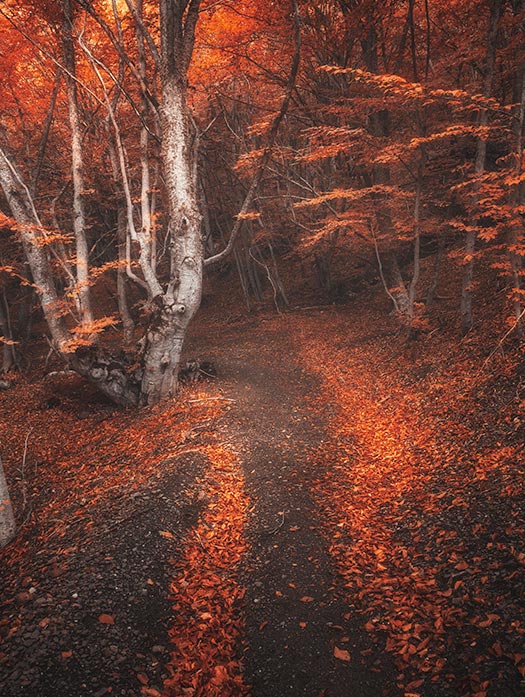
Deciduous forest biome
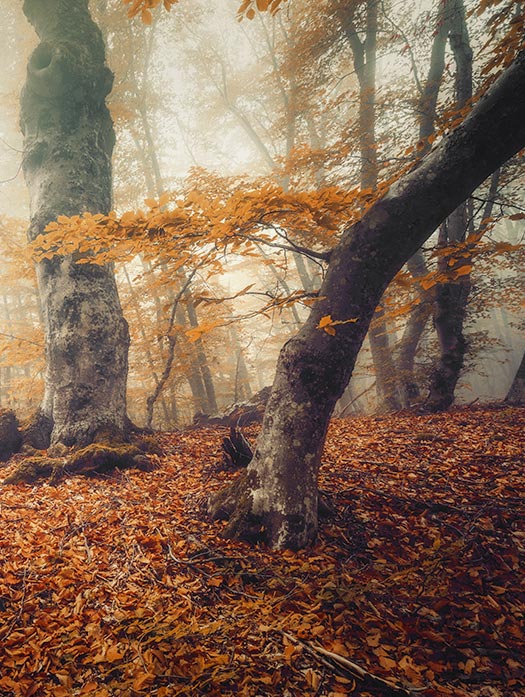
The temperate deciduous forest is a true representative of the four seasons. Spring welcomes a rainbow of wildflowers along the forest floor as towering trees begin sprouting new leaves. This is followed by summer, full of warmth and lush greens from ferns and mosses below to a thick canopy of leaves above. As the temperature dips come autumn, a canvas of yellows, oranges, and reds is revealed before the trees drop their leaves for the cold blanket of sparkling winter snow and frost.
While the temperate deciduous forest biome is strongly characterized by the four seasons, and primarily limited by cold winters, what else defines it? What animals and plants live in the temperate deciduous forest? And what adaptations do they have that help them survive here? This is what we are here to help you with!
Where are temperate deciduous forests found?
Based on the lines of latitude (the imaginary lines that run east and west on our planet), we can divide the world into three regions: polar, tropical, and temperate. Polar regions are the most northern and southern (between 66° and 90° lat), with temperate regions further towards the equator (23° and 66° lat), and tropic regions in the center (between 0° and 23°) surrounding the equator line.
The temperate deciduous forest, sometimes known as the temperate broadleaf forest, is found in (you guessed it!) temperate regions, mainly in the Northern Hemisphere, with a few pockets in southern regions as well. In the North, these forests are often nestled between temperate grasslands and the boreal forest and are found in Eastern North America, midwestern Europe, and parts of Russia and Eastern Asia. The southern groups are found in parts of Australia and New Zealand, and the southernmost parts of South America in Chile.
Angiosperm versus gymnosperm and evergreen versus deciduous trees
Before we get into discussing more about what makes this biome special, let’s take a quick look at how types of trees are defined:
Trees can be grouped by many things; however, some main distinctions are based on their reproductive system—angiosperms or gymnosperms—and whether or not they seasonally lose their leaves—deciduous or evergreen.
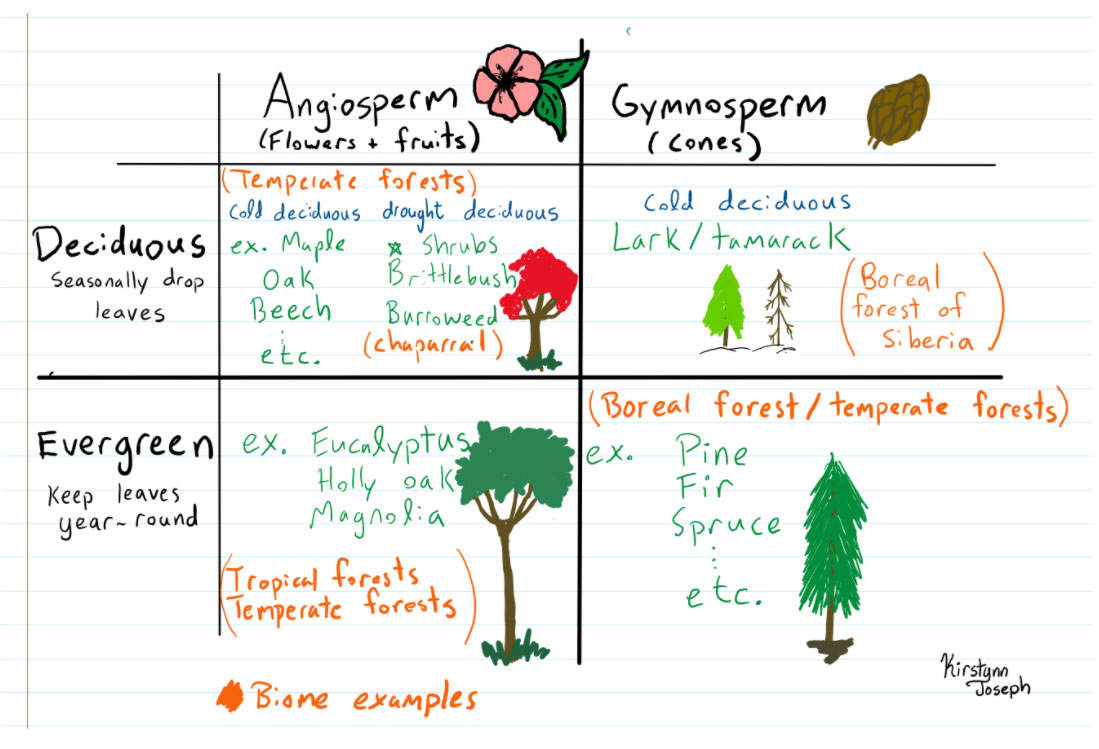
As you can see, angiosperms are plants that reproduce through flowers that later form fruits and seeds. Gymnosperms, on the other hand, reproduce through seeds on cones, which is why they are often referred to as conifers.
Deciduous trees lose their leaves seasonally, as is hinted from its name’s Latin root which means “to fall”. They either do so due to cold (cold deciduous) or drought (drought deciduous), while evergreen trees keep their leaves, whether broadleaf or needleleaf, year round. Read more about why the loss of leaves is beneficial below in the plant adaptations section.
Types of temperate deciduous forests
Since this biome is found in different regions, the forest and plant community, meaning the different species of plants living in the area, differ. The abiotic factors, such as temperature or amount of rain, will differ some, but not enough to be classified as a different biome. These “types” of forest are also known as eco-regions.
- Classic Broadleaf: Forests with mostly deciduous angiosperms, such as those in Eastern North America and much of Asia.
- Mixed Broadleaf and Conifers: These are normally found in harsher conditions where more gymnosperm trees can thrive, such as the transition zone from temperate forest to taiga in the Eastern Himalayas for example.
Just to be clear: some temperate forests that ARE NOT considered temperate deciduous forests are:
- Dry Summer: Areas that are mild but usually experience summer drought—like the mediterranean basin or the coast. These regions may be better classified as mediterranean forests or chaparral.
- Subtropical: Warmer, wetter climates allowing for evergreen angiosperms and gymnosperms in places like South Eastern USA and Southern China.
- Australian Eucalyptus Forests: This is its own group because despite the difficult climate, these trees remain evergreen year round.
- Temperate Rainforests: This one is special because it receives enough rain to be considered a rainforest (175–200 cm [68–78 inches]/year), but it is found in temperate regions and is therefore not quite as productive as a tropical rainforest. Examples are those in the Pacific Northwest of Canada or in Tasmania.
What defines a temperate deciduous forest?
A biome is defined by its vegetation and by the abiotic factors present, meaning precipitation, temperature, soil nutrients, etc.. The temperate deciduous forest is primarily defined by four distinct seasons and cold winters, but what else?
If you have never had a chance to experience all 4 seasons… here’s a time lapse.
Precipitation
Second to the tropical rainforest, the deciduous rainforest receives around 75–150 cm (~30–60 inches) a year, in the form of both rainfall and snow. This high rainfall allows for high productivity and good soil conditions, especially relative to many other biomes. This abiotic factor also allows for water dependent deciduous broadleaf trees to thrive, and excludes or limits conifers that prefer drained soils.
Temperature
Temperature varies strongly from one season to the next. The average yearly temperature is about 10°C (50°F), while summer varies from 20 to 32°C (70 to 90°F) and winter from -1 to -30°C (30 to -22°F).
These cold winter temperatures are the main limiting factor for the plants and animals that live here.
Soils
In general, the soils are fertile, have plenty of water, and create good growing conditions. The fact that trees drop their leaves every fall means that there are plenty of nutrients put into the ground continually.
These soils can be classified as Alfisols and tend to have a thick humic layer—the layer of decomposed organic material—though sometimes there is a bit of clay build up as well.
In sandier areas with more soil drainage, aka drier soil, you will have more conifers and less broadleaf trees.
Sunlight hours
Sunlight varies strongly with the season with much more sun in summer than in winter, and with the difference being more extreme the further north or south you go. To give a general idea, in North Eastern USA, one of the famous tourist destinations to go see leaves change color in the fall, there is about 13–14 hours of sunlight in the summer and around 9–10 hours in the winter.
Little sunlight reaches the ground in these habitats, meaning most herb layer and ground layer plants, even the understory trees, need to be shade-tolerant, or able to thrive with very little light.
Layers in the temperate deciduous forest
Though less complex than the tropical rainforest, deciduous temperate forests are rich in biodiversity and contain key vertical layers of plant life:
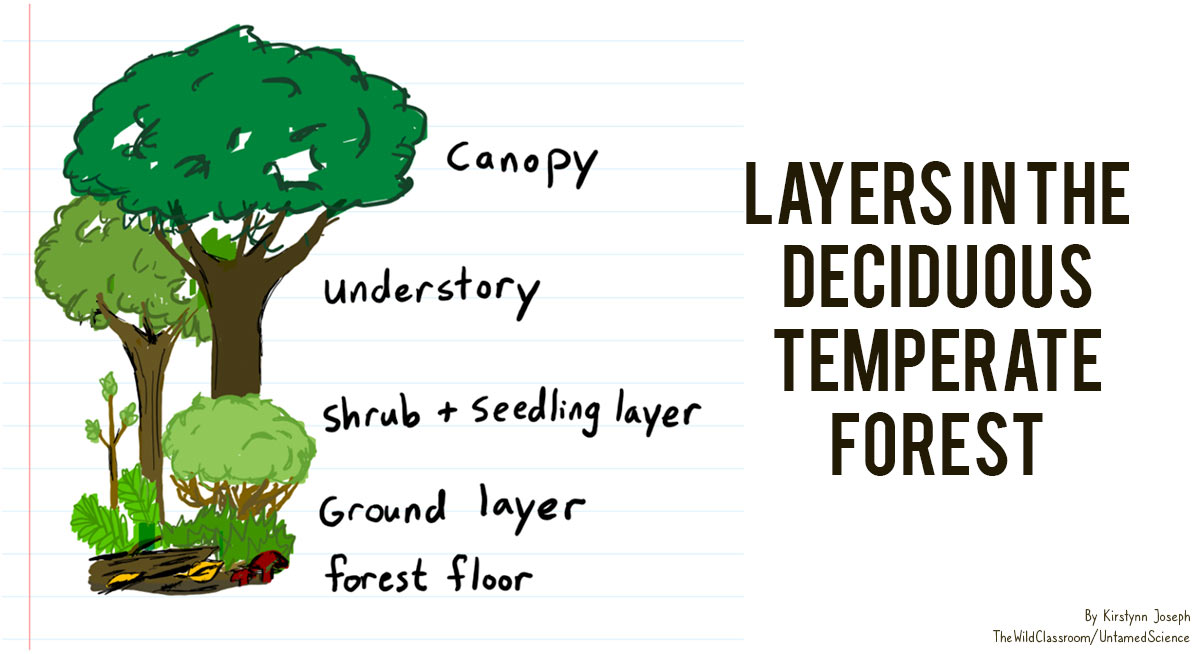
Forest floor
This is the layer tucked underneath all the living plant material. Dead rotting trees, fallen leaves, and branches cover the top soil and humic layers that are full of different decomposing organisms such as fungi, invertebrates like millipedes and springtails, and microscopic bacteria. The soil in these forests tends to be very rich and packed with nutrients, allowing for very complex interactions both in the soil and above it.
Groundlayer
This is the lowest layer of live plants: grasses, ferns, wildflowers, mosses, creeping shrubs, and liverworts live here. All of these plants are able to live in low light and some will even die with too much light exposure.
Shrub and seedling layer
In this layer you can find woody shrubs, such as blueberries or elderberries. There are also saplings, or very young trees, growing here—usually very slowly due to the lack of light. Once a large tree dies and falls, it will open up a space for light to enter the forest floor, allowing these long-time saplings to grow upwards relatively quickly. This is called gap-dynamics, where essentially all little saplings are waiting for a bigger tree to die so that they can grow quickly and take its space in the canopy.
Understory
This layer is just below the canopy and is made up of shorter, more shade-tolerant tree species or younger versions of the taller canopy trees.
Canopy
This is the top layer of the forest. The tallest and most mature trees grow here, many times blocking out much of the sunlight, especially in the case of broadleaf trees.
Horizontal community differences
Differences in the topography (altitude, angles of slopes, etc.), aspect (the angle a hill faces which impacts sunlight, wind, and rainfall), soil quality, moisture, and light availability will also change the plant community in a horizontal manner as some plants can grow better in different conditions than others. For example, a large hill with thinner, rockier soils in parts of the forest may result in more hardy shrubs than in large trees.
As well, large natural disturbances, like fire or insect invasions, will result in younger vegetation and a different plant community in one area than in another because the forest takes time to once again return back to the way it was. It will start out as grasses and wildflowers, then shrubs, and soon trees will begin to recolonize the area—this is called forest succession or ecological succession. This gradual difference in the plant community in a horizontal direction is referred to as the vegetational continuum.
Biodiversity in the temperate deciduous forest
What lives in the temperate deciduous forest?
The favorable soil conditions and high precipitation, yet cold difficult winters, create a balance of relatively high biodiversity amongst the biomes of the world. The trees that thrive in this biome tend to be fairly widespread and common worldwide, or cosmopolitan, but there are cases of endemic species. Shrub and herb plants tend to be more diverse than the trees, and there are many invertebrates and small mammals, some larger mammals, and a good variety of birds, many of which only migrate here in the summers and leave before winter sets in.
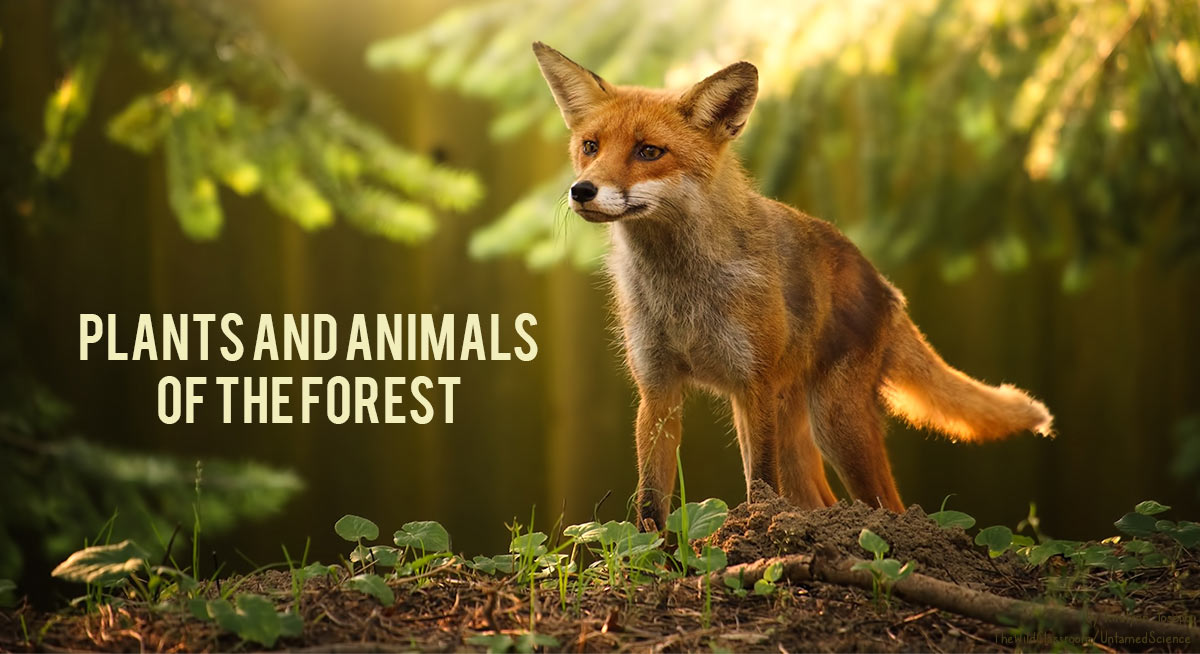
Plant adaptations to the temperate deciduous forest
Adaptations arise in organisms as a way to survive under specific pressures, so what plant adaptations do we find in the temperate deciduous forest?
To deal with cold winters, many plants here are deciduous, meaning they drop all their leaves before winter. Broadleaf deciduous trees include trees like: Oak (Quercus), Beech (Fagus), Maple (Acer), Chestnut (Castanea), Elm (Ulmus), Aspen (Populus), Walnut (Juglans) and Linden (Tilia). Deciduous shrubs, such as rhododendron, also live here.
In order to drop their leaves in fall, deciduous plants cut off the water supply, pull back any nutrients they can, and let their leaves die and fall off. If you have ever been in a deciduous forest in fall, or even seen photos or videos, you surely have noticed the color change in the leaves before they drop off. This is caused by the death of chlorophyll cells, which leaves behind yellow pigments, sometimes even turning the leaves red because of anthocyanins—a chemical made to help leaves absorb the last bit of light and heat in the fall.
Watch this iconic maple leaf change color:
The plants do this because it is too “expensive” to keep the leaves alive with the cold and freezing temperatures. Instead, they will trigger this response through specific hormones and go dormant for the winter. Once spring arrives, bringing back warmth, water, and sunlight, these plants regrow their leaves. The woody stalks of trees, and many shrubs, are packed full of lignin, a hardy compound that makes it possible for them to withstand winter in this dormant state and continue to grow next year instead of dying away and starting over. However, it is important to know that it takes a lot of energy to regrow all those leaves every year, which is why deciduous trees cannot survive well in places like the taiga and only live in these rich environments with lots of rain.
The evergreen gymnosperms that live here have the alternate strategy of keeping their needle-like leaves through winter. These leaves are protected by a thick cuticle, or waxy cover, and antifreeze resins. Examples of conifers found within mixed forests are: Pine (Pinus), Fir (Abies), and Spruce (Pinaceae).
Plants that do not have strong woody stalks are normally perennials—they go dormant over winter and come back to life in the spring—that sprout back from their rootstalk that survives dormant underground. Some examples are: American Hemlock (Tsuga canadensis), Buckeye (Aesculus), primroses (Trientalis), mayapples (Podophyllum) and many many more.
Plants that live below the canopy need to deal with a lack of light getting through. To deal with this, some plants have large broad leaves to absorb as much light as possible, while others, like mosses, ferns, or wild ginger (Asarum canadense L.), are shade-tolerant. Another strategy to deal with the lack of light is to grow and bloom before the trees have a chance to fill the canopy with their leaves. Plants that do this, such as blue bells (Mertensia sp.) and bloodroot (Sanguinaria canadensis), are called ephemerals.
Some plants escape the dark forest floor by climbing up other trees with long vines, or by being epiphytes, which means growing directly on other plants.
Another important part of survival is reproduction and dispersal. Many (though not all) angiosperm trees and shrubs are in a mutualistic symbiotic relationship, meaning both individuals benefit, with different animals to help take care of both of these problems. To reproduce with other individuals, flowers attract pollinators with bright colors, strong scents, and energy-rich nectar. While feeding, the animals, be it a bee, butterfly, beetle, or bat, pick up pollen (which is the male gamete needed to fertilize a female flower) then move to another flower and distribute it!
In terms of seed dispersal, a parent plant does not want to compete with their offspring for things like nutrients and space. They want to spread the next generation to new areas and their seeds to go far away. Many plants rely on wind for this, however, there is a different method. The fruits produced by angiosperms encourage animals to eat them, but the seeds have a protective coating and therefore are not digested. When the animal moves to a new space and excretes waste, this allows the seeds to grow in a new location!
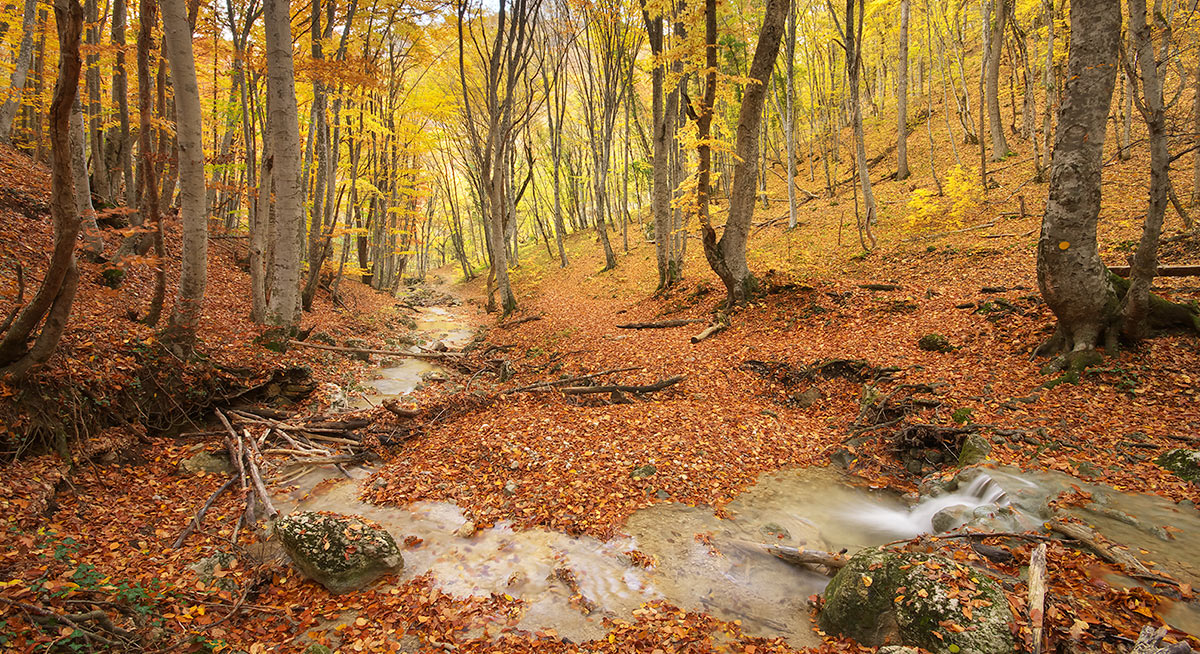
Animal adaptations to the temperate deciduous forest
Animals can have three types of adaptations to deal with environmental obstacles: structural (the physical traits of their body), physiological (how their hormones and metabolic systems deal with stresses), and behavioral (actions they take to better survive in an environment). So what adaptations do animals in the temperate deciduous forest have that enable them to thrive here?
The biggest stressor in this relatively mild biome is cold winters with little food availability. Animals need to either adapt to survive it—the residents—or go further south to better climates once the weather cools down—the migrants.
Residents
For birds and mammals, adaptations to survive in the cold winters are similar to those you will find in other cold biomes like the arctic tundra; however, they also have to deal with warmer summers, and do not face the same problems presented by a dry climate.
Mammals such as white-tailed deer (Odocoileus virginianus), foxes (Vulpes), the North American Porcupine (Erethizon dorsatum), racoons, red wolves, bears (Ursus sp.), North American beavers (Castor canadensis), and more make their home here and they have ways to deal with the cold.
These mammals have very round, and often large, builds which helps them lose less heat since they have less surface area in contact with the cold air, shorter ears and tails (though not as pronounced in the tundra), seasonal thick insulating fur/feathers that they grow as the temperature drops, wide feet (also with thick fur/feathers) to walk on the snow, and the ability to create fat stores in summer to help them survive and stay warm during the winter.
Birds that stay through the winter have to be more creative with their food. The Pileated Woodpecker (Dryocopus pileatus), for example, uses a powerful beak and specially adapted skull to burrow into trees and eat the insects hiding inside. Jays (Corvidae family), among other birds and mammals, such as the European Red Squirrel (Sciurus vulgaris), have a behavioral adaptation to spend the spring, summer, and fall eating as much as they can, while also storing food away to last them for the winter. Last, it helps to be omnivorous—eating meat and plants—just like the Northern Cardinal (Cardinalis cardinalis). The Northern Cardinal feeds on insects, fruits, and seeds. Being less “picky” about what you eat means there will be more options throughout the year.
Animals that do not migrate south or have a great ability to withstand winter have a combined physiological and behavioral adaptation to sleep through winter instead! Mammals like black bears (Ursus americanus) and wood mice (Apodemus sylvaticus) hibernate—which means extremely lowering their metabolism, allowing them to sleep months at a time—while the various amphibians and reptiles that live in this biome, such as tiger salamanders (Ambystoma tigrinum), box turtles (Terrapene), American toads (Anaxyrus americanus), and various frogs, do something called brumation. This is different because reptiles are heterothermic ectotherms and let their body temperature and metabolism change with the temperature, so instead of physiologically slowing themselves down, they just let the cold do it!
See this article for the difference between hibernation, brumation, and estivation.
Invertebrates are very important to the ecosystem and everything from butterflies like the Eastern Tiger Swallowtail (Papilio glaucus), to spiders such as wolf spiders (Lycosidae sp.), snails, and even the little springtails (collembola) found in the soil are important here. Many of these insects live short productive lives in the summer and die in the winter, leaving behind eggs for the next generation in spring, but some are also able to brumate and hide away in holes of trees or buried far underneath the leaf litter.
Did you know that you should refrain from raking the leaves in your yard in the fall and early spring to help protect these hibernating organisms and/or their eggs/larva?
Migrants
Like many biomes with cold winters, the majority of the birds here fly south for the winter. Some examples of migrating birds in the temperate deciduous forest are: Wood Thrushes (Hylocichla mustelina), Scarlet Tanagers (Piranga olivacea), American robins (Turdus migratorius) and European robins (Erithacus rubecula), some hummingbirds, and various warblers (Passerine sp.).
To be able to migrate, birds must be able to fly long distances in a short period of time, and their reproduction cycle needs to be quick as chicks need to hatch and grow strong enough in just one season to make the long journey back south in the fall. This often results in both parents raising the young (behavioral!), as two individuals can deliver more food than one and help keep up with the demand of a quickly growing baby.
Temperate deciduous forests and us
The temperate deciduous forest, with its beautiful four seasons, and relatively hospitable environment, is used by humans for living, tourism and recreation (especially to come see the fall colors), resource extraction like logging, and, like any forest, is important for the carbon and water cycles.
Direct impacts on temperate deciduous forest
Regions of the world that contain temperate deciduous forest are also heavily populated by people. Unfortunately, this has made this particular biome the most developed and degraded of them all. In many parts of the world, within human settlements and farmland, only patches of undisturbed forest remain. Most forests have now been converted to cities and land for crops or livestock, with small pockets in between developments and remote mountain areas representing the true nature of this biome.
Land use change, such as conversion of forest to farmland or cities and parks, as well as unsustainable logging and strip mining have rid us of a huge percentage of true temperate deciduous forest, causing many plants and animals that live here to be endangered.
This is especially true for animals that need a lot of space or have a hard time moving between patches of forest and are severely harmed by habitat fragmentation, the breaking up of habitats by developing. Large predators in particular, like wolves and bears, need a lot of space to have a suitable territory to live in and can not make it in small patches. Too much human settlement also leads to more human-animal conflict—such as predators occasionally preying on livestock—especially when there is little prey available and the community has not implemented strategies such as livestock protection dogs and rangers to help lower this conflict. Fragmentation also results in more harmful inbreeding, where animals breed with close relatives because they are not able to spread out and mix with other populations.
When large apex predators, meaning the animal at the “top of the food chain”, are removed, it has negative impacts on the entire system.
Watch this video to see how apex predators can restore an ecosystem.
Additionally, many animals and plants rely on undisturbed old forest to thrive. For example, the Cerulean Warbler (Dendroica cerulea) relies on the thick broadleaf canopy to nest and hide from predators and is endangered in places without enough large mature trees.
Disturbed forests are also more vulnerable to take over by invasive species because the ecosystem is not functioning in the way that it normally would.
Indirect impacts on the temperate deciduous forest
As with most habitats, climate change is also impacting the plant and animal life in temperate deciduous forests causing changes in timing of plants blooming, growth, dormancy, and more, which could have severe impacts if the forest cycle becomes out of sync and plants and animals have interruptions in their normal relationships.
Climate change also increases drought and fire, making these systems even more prone to harm by invasive species.
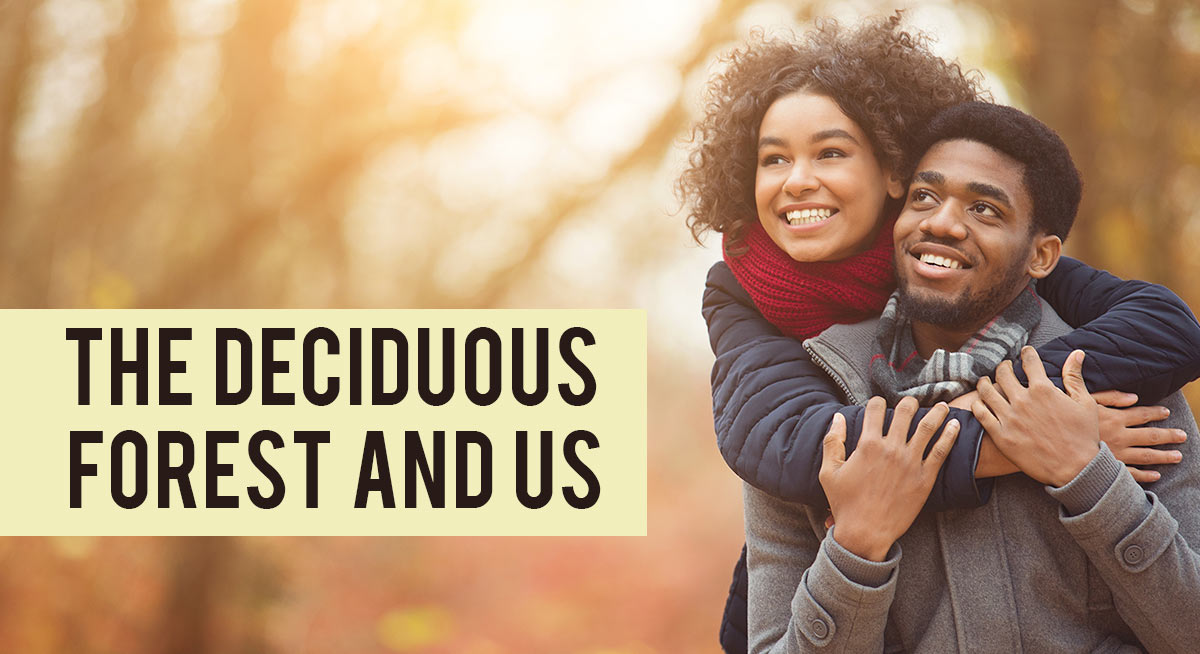
What are we doing, and what can you do, to protect the temperate deciduous forest
Thankfully, conservation organizations worldwide are working at restoring forest areas and reintroducing species back into their natural habitats to try. As well, companies and governments that develop land and/or extract material are being held more accountable to do so in a sustainable manner and to carry out restoration projects after they leave an area.
You can help the deciduous forest by searching up conservation organizations near you and taking part in volunteer events, such as invasive species removal, tree planting, or make a donation to the cause. Of course, always respecting nature while you are out recreating in the forest is key; do not litter, don’t harm plants or wildlife, and make sure to be responsible with fire.
The temperate deciduous forest is the icon of the four seasons, and home to many irreplaceable plants and animals. Since this biome overlaps areas where large numbers of people live, many of us have a special connection to this type of forest. Conservation and restoration projects are key to preserving these beautiful regions, and hopefully with time, we will see more deciduous forests return to their full glory.
Deciduous Forest Biome in Virtual Reality
Did you enjoy that 360° experience? If so, watch more.
